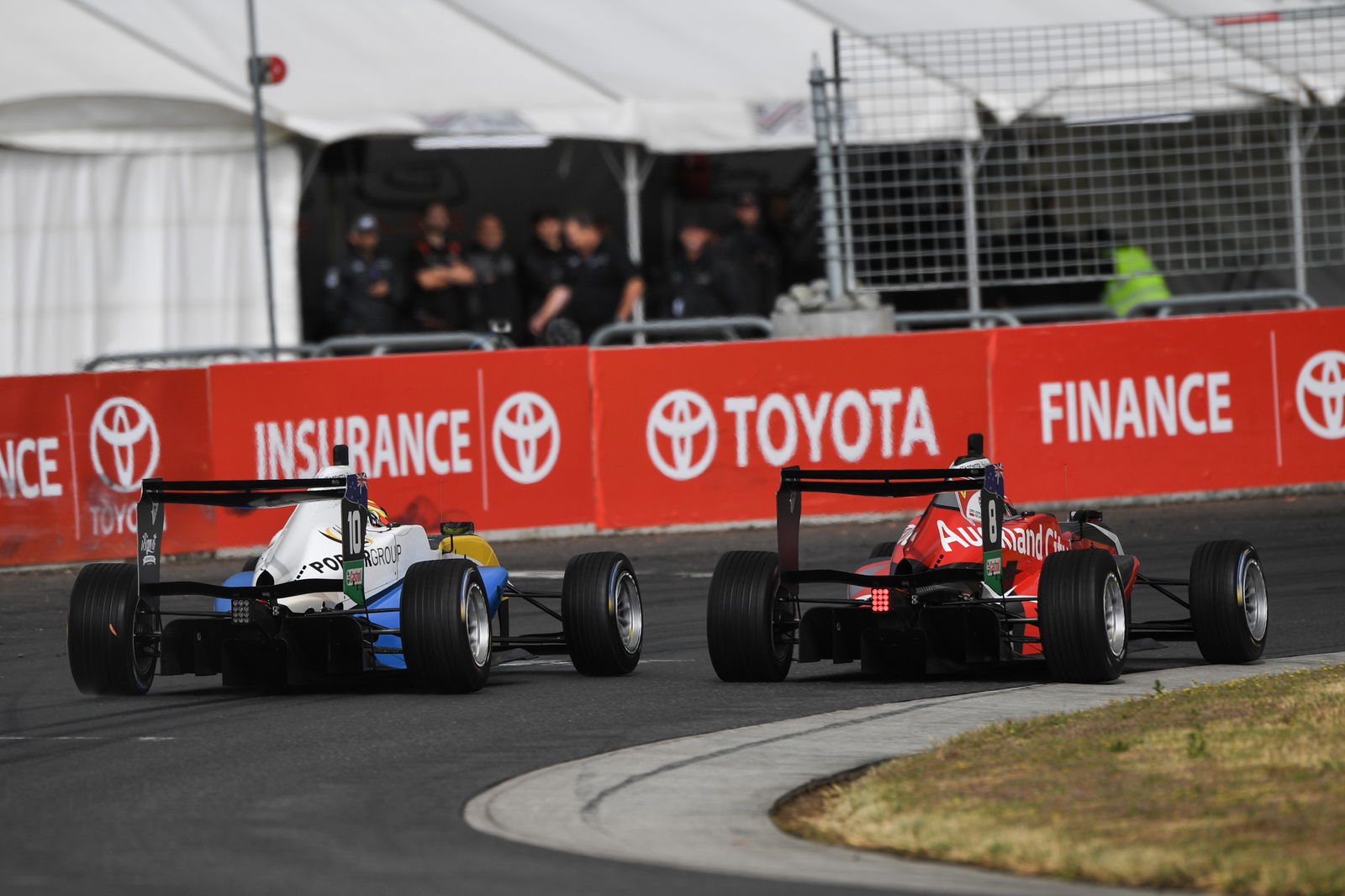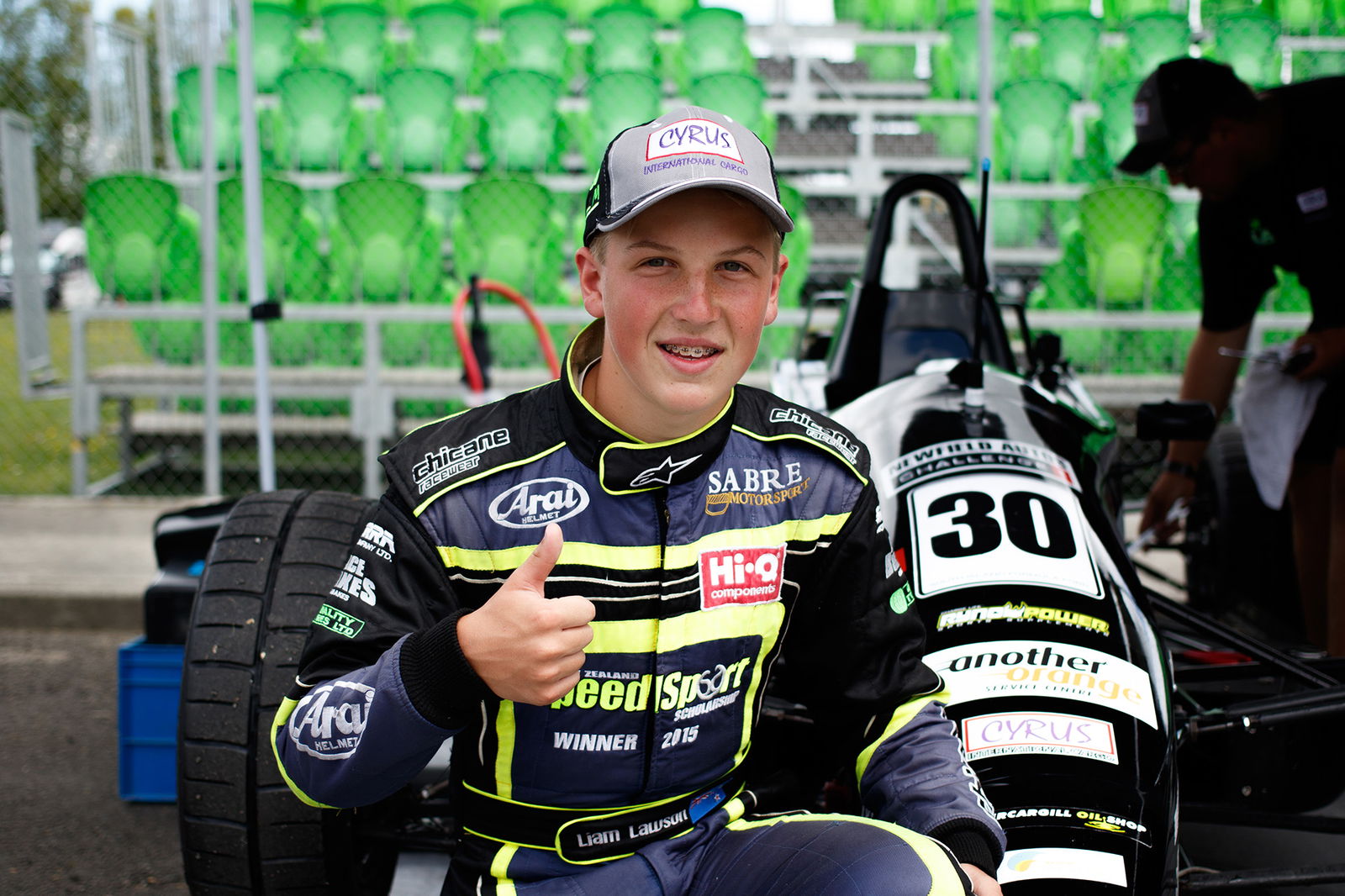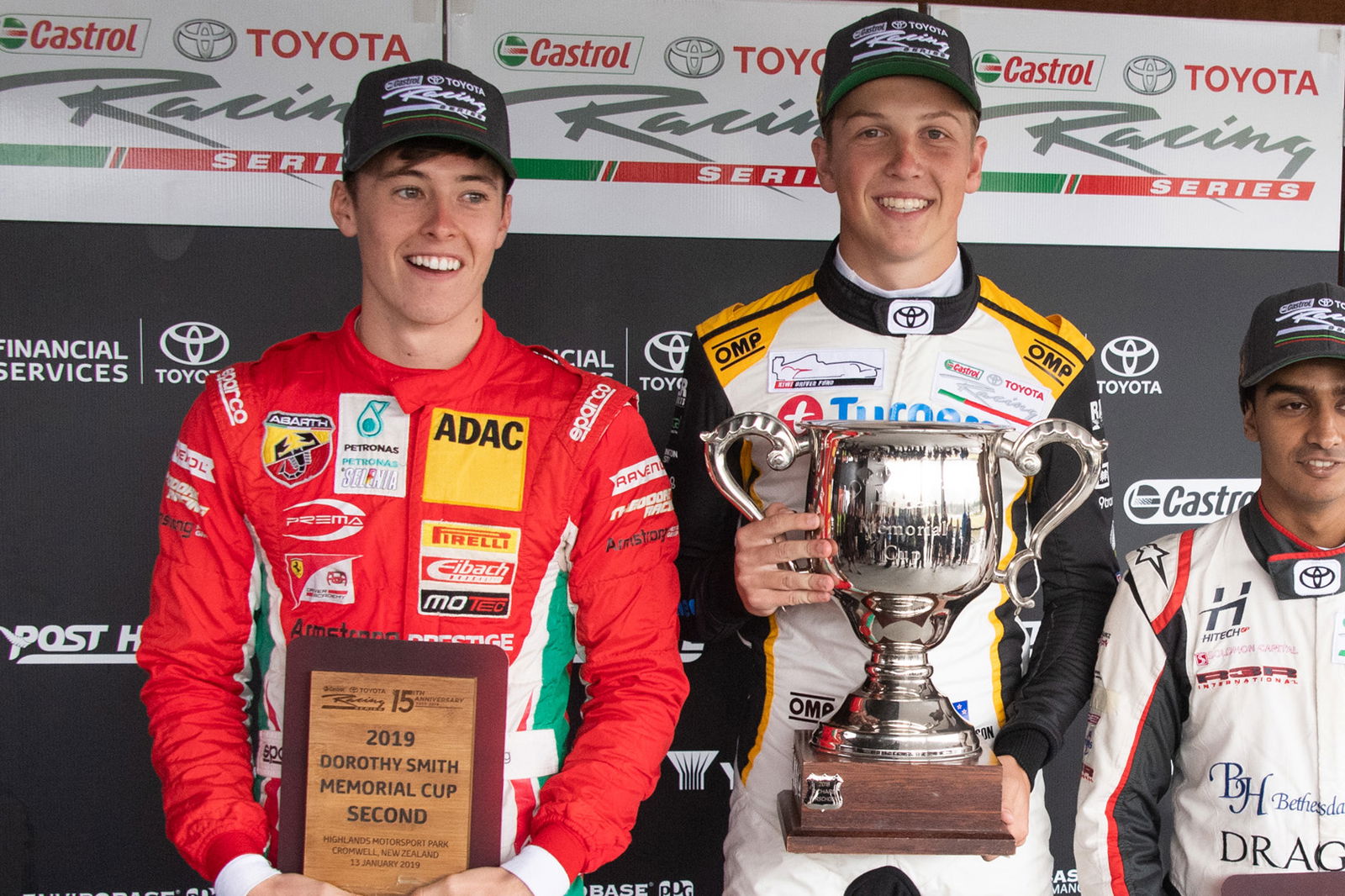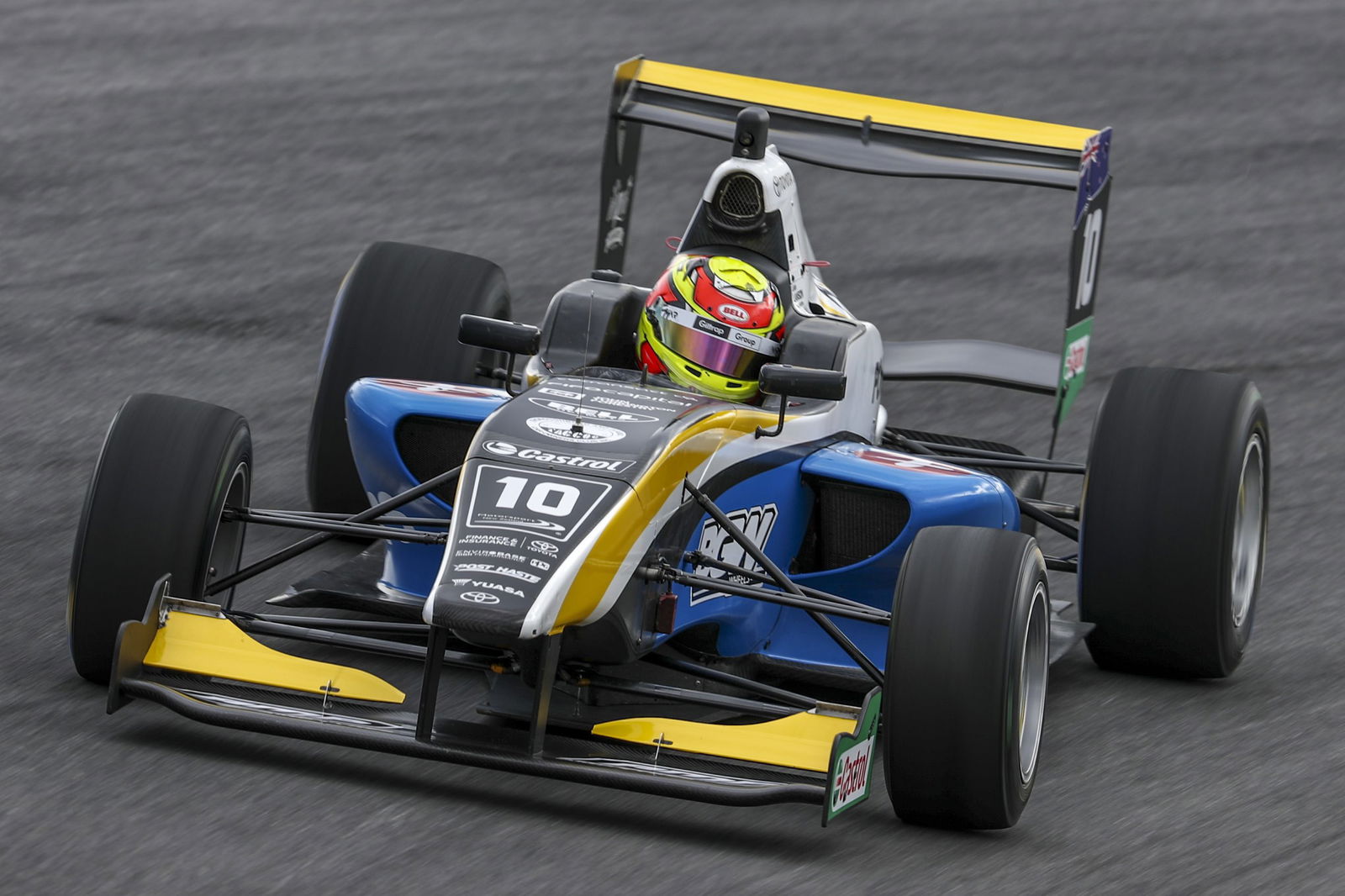

By 2019, there was a feeling that the teenager who lived down the road from Pukekohe Park was going to be New Zealand’s next big thing.
There was, however, an undeniable undercurrent of pessimism.
Tally poppy syndrome has long run rife through New Zealand sport, and locally there was little reason to believe the country of five million would produce an F1-level talent any time soon.
Since Mike Thackwell’s short-lived career of five grands prix ended in 1984, Brendon Hartley had been the only New Zealander to reach the top.
More on Daniel Ricciardo and Liam Lawson
👉 Liam Lawson announced as Daniel Ricciardo replacement at RB
👉 Outpouring of emotion as Ricciardo leaves F1
👉 After Liam Lawson, is this New Zealand’s next best F1 hope?
Even he made it to F1 in the most unlikely of circumstances in 2017 when the then Toro Rosso and Renault teams went through a driver shuffle, leaving Red Bull scrambling to find a replacement for Carlos Sainz.
Hartley’s appointment felt like a means to an end with no drivers in Red Bull’s junior program ready to make the step up beyond Pierre Gasly, who Toro Rosso replaced Daniil Kvyat with.
For some, Hartley’s debut at 27 felt overdue. He’d tested with Toro Rosso in 2008 and seemed assured of making a start in 2009 but was pipped to the post by Spaniard Jaime Alguersuari when Frenchman Sebastian Bourdais fell out of favour.
Hartley lasted little more than a season and by the end of 2018 was replaced by Alex Albon, who eventually found himself embroiled in the Red Bull rollercoaster of promotion and relegation.
Few expected Hartley to ever make it to F1 after being left out of the frame in 2009. After him, Mitch Evans and Richie Stanaway were seen as the most likely to make it.
Evans had flashes of brilliance in F2 but never came close to the title in his four seasons while Stanaway stumbled when he broke his back in Formula Renault.
If neither Evans nor Stanaway could do it, what made Lawson any different?

The first inclination was when he became the world’s youngest Formula Ford champion on his 15th birthday, all of this alongside his dad Jared who hardly claimed to be a race engineer.
Lawson duly stepped up to F4 in Australia where he impressed on his way to third. Just three years into car racing and Lawson was shipped off to Germany to compete in their local F4 championship where he was thrown into the deep end.
Lawson still credits that campaign as one that set up him for success. He ran a distant second to Lirim Zendeli who by that year was in his third F4 campaign in Germany. Still, the competition was tough, and he proved himself on circuits he’d never seen before. All of this at 15 years old, no less.
To that point, Lawson had impressed but not done much differently to anyone before him. Like Evans and Stanaway, he climbed to the next rung on the ladder to the Toyota Racing Series.
Soon enough, there was an air of expectation around Lawson. He clean swept a one-off appearance in the Asian Formula 3 Championship at the end of 2018, proving the step up from F4 to F3 wasn’t too big a challenge.

However, coming into the 2019 season, few expected Marcus Armstrong to be beaten. The Ferrari junior narrowly missed out on the 2018 title to Richard Verschoor and with a year of FIA Formula 3 European Championship experience there was little doubt he was the favourite.
But then came Lawson, who qualified on the front row at Highlands Motorsport Park and beat Raoul Hyman into the first turn to streak clear. “Awesome Lawson” read the headline after he broke the lap record on his way to a nine-second win. Armstrong wound up second.
While Lawson’s opening account was mighty impressive, it was the last race of the weekend that made waves. In the wet, he drove around the outside of Armstrong at the hairpin and stayed on the outside from the final turn to the chicane. Lawson in that moment proved Armstrong’s years of experience counted for little.
Lawson set about chasing Red Bull junior Lucas Auer, who at the time was being spoken about as a potential pick for Toro Rosso who were still scrambling to find talent. It wasn’t long before Lawson got past and cleared out to a 15-second lead.
In F1 folklore, there are plenty of tales of prodigious talents and moments often remembered as being pivotal in a driver’s career. For Lawson, that pass will be thought of as his career-defining moment.
Footage of the pass made waves globally and in the days after the race rumours began to swirl that F1 teams had their eye on Lawson. Red Bull and Renault came knocking and soon enough the 16-year-old had signed with the energy drinks manufacturer.
Before the Toyota Racing Series, Lawson had nothing locked down beyond the five-week series. In a matter of weeks, Red Bull had put together a 30-race program across the FIA Formula 3 Championship and Euroformula Open Championship.
The five years since that pass have hardly been smooth sailing. Lawson hasn’t won a title since that Toyota Racing Series triumph in 2019 and has had to be the bridesmaid three times since then. Lawson’s losses, some might argue, made him a much better driver.

Stats often paint a good picture of a driver’s ability. For Lawson, it’s a model of consistency. From 2017 to 2023, Lawson finished on the podium on debut in every category bar one.
If nothing else, Lawson has been patient. Red Bull seemed content not to rush the Kiwi into F1 even when Nyck De Vries and Daniel Ricciardo looked like last a resort. Even Lawson’s debut wasn’t by design, but rather out of necessity when Ricciardo broke his wrist.
Lawson’s ninth place finish in Singapore in just his third race last year validated the thoughts of many back home in New Zealand. Still, the wait continued.
Come October, Lawson will race at Circuit of the Americas as an RB driver – coincidentally, the same circuit that Hartley made his F1 debut with Toro Rosso.
For Lawson’s fans, it’s felt like a painstaking wait. For his family, it may feel like a lifetime since he signed that Red Bull contract just five years ago. For Lawson, he may feel like he’s finally reached the top.
In reality, the journey starts now.





















Discussion about this post